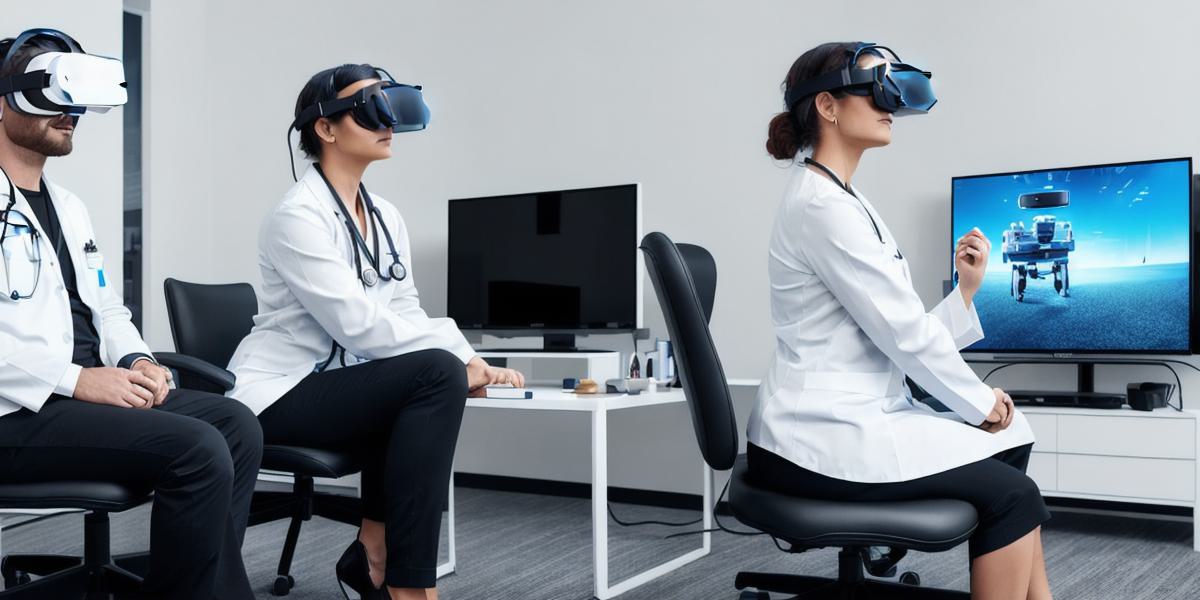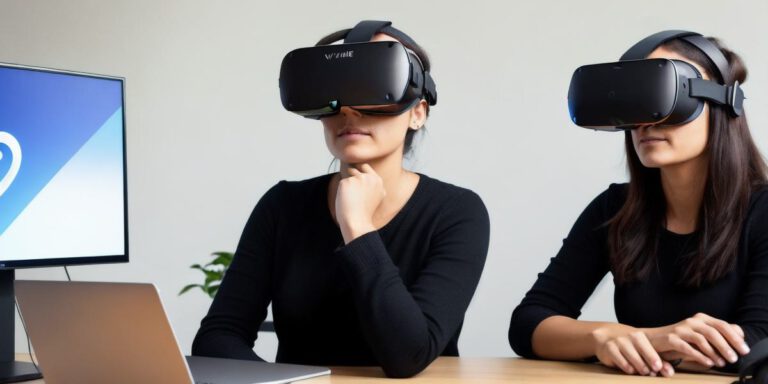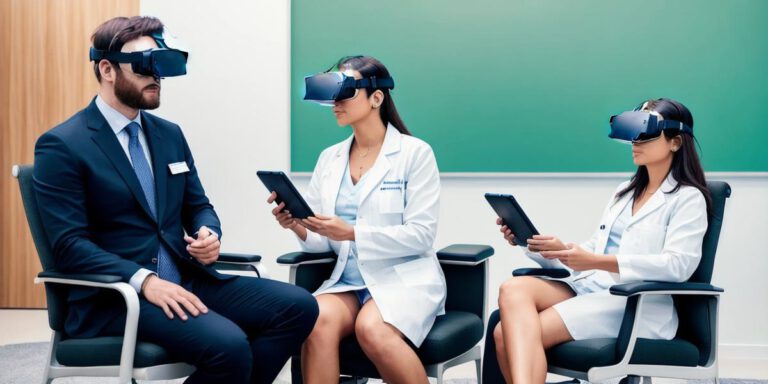Telemedicine in Virtual Reality: Revolutionizing Remote Healthcare Delivery through Immersive Technology.

Title: Telemedicine in Virtual Reality: Revolutionizing Remote Healthcare Delivery through Immersive Technology
Introduction:
In recent years, telemedicine has become increasingly popular, as it allows patients to receive medical care from the comfort of their own homes. However, virtual reality (VR) technology is taking this concept even further by providing immersive experiences that allow doctors and patients to interact in a more realistic and engaging way. In this article, we will explore how VR technology is revolutionizing remote healthcare delivery through immersive technology.
Virtual Reality in Healthcare:
Virtual reality has been used in various fields, including gaming, education, and entertainment, but it’s now being used in healthcare as well. The use of VR technology allows doctors to simulate real-life scenarios and provide patients with a more immersive experience. For example, doctors can use VR simulations to treat patients with anxiety disorders, pain management, and PTSD.
Case Study:
A recent study conducted by Stanford University found that VR therapy was as effective as traditional in-person therapy for treating PTSD in veterans. The study showed that the use of VR technology allowed patients to confront their fears in a safe and controlled environment, leading to significant improvements in their symptoms.
Virtual Reality in Telemedicine:
Telemedicine is already being used in healthcare, but virtual reality can take it to the next level by providing an immersive experience for both doctors and patients. With VR technology, doctors can remotely perform surgeries and other medical procedures, allowing them to reach patients in remote areas who might otherwise have limited access to healthcare.
Virtual Reality Training:
Virtual reality can also be used for training purposes, allowing medical students and professionals to practice their skills in a safe and controlled environment. For example, surgeons can use VR simulations to practice complex procedures before performing them on real patients, reducing the risk of errors and improving patient outcomes.
FAQs:
- What is Virtual Reality technology?
Virtual reality (VR) technology is an immersive computer-generated simulation of a 3D environment that allows users to interact with the virtual world using sensors and headsets. - How does VR technology work in healthcare?
Virtual reality can be used for various purposes in healthcare, including therapy, training, and remote care delivery. - What are some benefits of using VR technology in healthcare?
Some benefits of using VR technology in healthcare include improved patient outcomes, reduced costs, and increased access to care. - Is VR technology safe to use in healthcare?
Yes, VR technology is generally safe to use in healthcare, but it’s important to follow proper safety protocols when using the technology.
Conclusion:
Virtual reality technology has enormous potential in revolutionizing remote healthcare delivery through immersive technology. By providing an immersive experience for both doctors and patients, VR technology can improve patient outcomes, reduce costs, and increase access to care. As this technology continues to evolve, it’s exciting to imagine the possibilities for the future of telemedicine.








